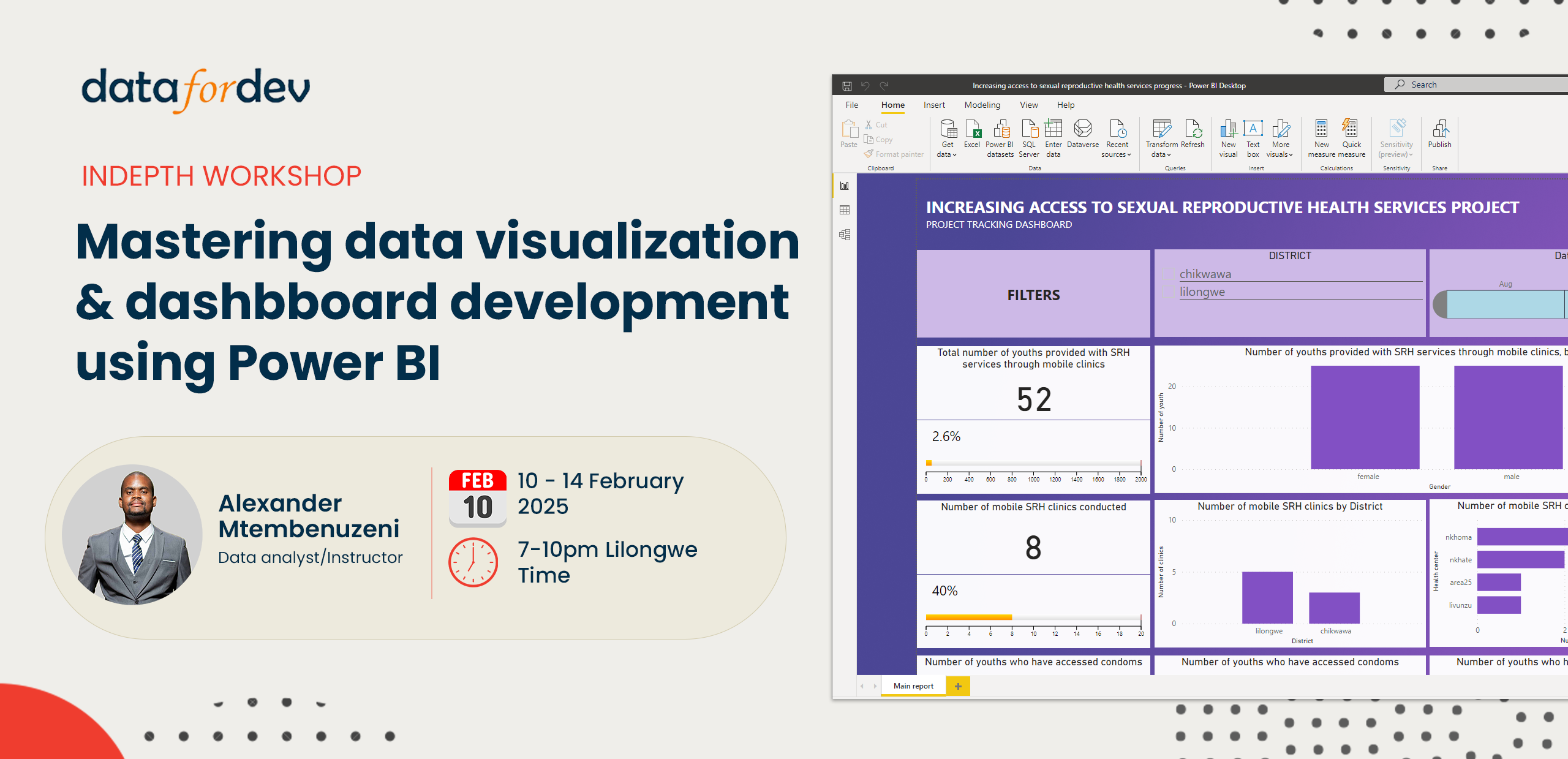Key Learning Outcomes:
- Transform raw data into professional, interactive dashboards that tell compelling stories
- Create automated reports that update in real-time, saving hours of manual work
- Build powerful calculations and metrics using DAX formulas
- Design visualizations that make complex data easy to understand
- Share insights securely across your organization
- Apply best practices in data visualization to maximize impact
Course outline
- Introduction and getting started
- Overview of Business Intelligence and Data Visualization
- Power BI ecosystem
- The Power BI interface
- Power BI building blocks
- Overview of building reports and dashboards in Power BI
- Connecting to a Microsoft Excel workbook
- Creating your first visualizations
- Editing and formatting visuals
- Using the report
- Connecting to data
- Connecting to Excel and CSV files
- Connecting to KoboToolbox
- Connecting to ODK
- Connecting to Google Sheets
- Cleaning, transforming, and modelling data
- Data cleaning and transformation techniques
- Changing data types, renaming columns, find and replace
- Creating relationships between tables
- Creating and using hierarchies
- Defining row-level security
- Performing calculations using DAX
- Creating calculated columns and measures
- Basic DAX functions (SUM, AVERAGE, COUNT)
- Conditional assignment using IF and SWITCH
- Basic time intelligence calculations (YTD, MTD)
- Using CALCULATE and FILTER
- Creating basic visualizations
- Introduction to Power BI’s visualizations (cards, charts, graphs, tables)
- Selecting appropriate visuals for different types of data
- Building bar charts, line charts, pie charts, and tables
- Formatting visuals (colors, labels, legends)
- Using slicers and filters for interactivity
- Advanced visualization techniques
- Working with maps, scatter plots, treemaps
- Creating KPI scorecards and guages
- Applying conditional formatting to visuals
- Downloading and using custom visuals
- Assembling visuals into a dashboard
- Best practices for dashboard design
- Combining multiple visuals into a single dashboard
- Creating interactive reports with bookmarks and buttons
- Synchronizing slicers across multiple pages
- Adding tooltips for enhanced user experience
- Publishing and sharing dashboards
- Publishing reports to Power BI Service
- Sharing dashboards with stakeholders
- Managing permissions and access control in Power BI Service
- Exporting reports to PDF or embedding them in websites
Who should attend
- M&E Specialists and Impact Measurement Managers
- Program and Project Managers
- Data officers or analysts
- Anyone who would like to transform your impact reporting from basic spreadsheets to compelling visual stories

